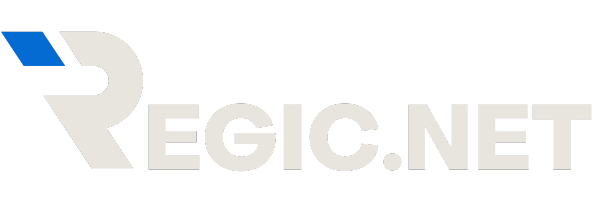In the ever-evolving world of web development, staying ahead of the curve is crucial for developers and businesses alike. As technology advances, new web development frameworks continue to emerge, offering better tools and enhanced performance compared to older alternatives. 2025 marks a pivotal year for web development, with several new frameworks gaining traction and reshaping the way developers approach both frontend and backend development.
This blog explores why developers are switching to these new frameworks in 2025, and how they’re addressing the changing needs of the industry.
The Shifting Landscape of Web Development Frameworks
The landscape of web development is constantly changing. As user expectations increase and the demand for faster, more secure websites grows, developers must adapt by using frameworks that offer enhanced scalability, performance, and ease of use.
New website development frameworks are designed with these needs in mind, offering tools that not only simplify coding but also optimize website performance. For instance, many developers are making the switch to newer backend technologies, as they allow for the creation of more sophisticated, high-performance applications.
These technologies enable easier integration with various services, databases, and external systems, reducing the complexity of managing server-side logic. As a result, developers are finding that modern frameworks improve productivity and result in cleaner, more maintainable code.
Backend Frameworks and Their Role in 2025 Development
In 2025, Backend Frameworks are at the forefront of web development innovation. These frameworks offer tools and solutions for building the server-side of web applications, allowing developers to focus more on the features and functionality rather than the underlying complexities.
Some of the newer back-end frameworks introduced recently have simplified data handling, improved security protocols, and reduced development time significantly. A significant reason developers are opting for these new backend frameworks is the reduction in the overall complexity of backend development.
These frameworks are tailored to streamline integration with databases and other backend services, making it easier to maintain and scale web applications. Frameworks like Laravel and Symfony have long been staples in backend development, but newer alternatives are entering the market, offering even better tools for developers to work with.
Enhancing Performance and Scalability
Performance is a critical factor when choosing a web development framework. Today’s developers require tools that can help build high-performing, scalable applications. Newer frameworks are designed with these factors in mind, utilizing advanced caching systems, optimized database queries, and robust API support.
For example, the integration of newer caching mechanisms in some of the back-end frameworks allows for faster data retrieval and reduced load times. This is especially important for applications that handle a large volume of traffic or require quick data processing.
The scalability offered by these modern frameworks ensures that developers can build websites that grow alongside their user base, without performance degradation.
Moreover, with the growing use of microservices and serverless architecture, newer frameworks offer seamless integration for these architectures, helping developers to adopt modern infrastructure practices with ease. This makes scaling applications more efficient, as developers can separate the backend services and scale them independently according to demand.
Adaptability to New Web Development Trends
As the web development ecosystem evolves, so too do the tools and technologies that developers use. In 2025, we are witnessing a shift toward adopting cutting-edge web development trends such as AI-powered applications, progressive web apps (PWAs), and real-time collaborative tools.
The newer website development frameworks are designed to cater to these trends, providing developers with the necessary tools to build highly interactive, data-driven websites. Additionally, these new frameworks are not only built with scalability and performance in mind but are also highly adaptable to the needs of the developer community.
Many of these frameworks are open-source, with active communities supporting their growth and ensuring that they remain up-to-date with the latest trends in web development. For instance, modern website development frameworks are integrating machine learning models and real-time data processing capabilities.
This makes it easier for developers to build applications that can predict user behavior, recommend content, or perform data analysis without relying on external services.
Security Features in New Frameworks
With the increasing prevalence of cyberattacks and data breaches, security has become a top priority for web developers. New frameworks are being built with security features designed to address current vulnerabilities and prevent common exploits.
Whether it’s built-in protection against cross-site scripting (XSS), SQL injection, or secure password hashing, these newer frameworks make it easier for developers to secure their applications. As cyber threats become more sophisticated, the importance of adopting frameworks with robust security protocols cannot be overstated.
For instance, frameworks like Laravel and Symfony have long been known for their emphasis on security, with built-in mechanisms for handling authentication, encryption, and secure data handling. Newer frameworks are following suit by offering additional security features, such as automatic vulnerability scanning and real-time alerts for potential security threats.
The Rise of Full-Stack Solutions
Full-stack development has become increasingly popular as businesses look for ways to streamline their development processes. Full-stack web development frameworks offer both frontend and backend capabilities, allowing developers to create entire web applications using a single framework.
These frameworks reduce the need to learn multiple technologies and simplify development workflows, resulting in faster and more efficient development cycles. In 2025, we are seeing more full-stack website development frameworks that offer comprehensive solutions for both backend and frontend development.
These frameworks allow for easy integration with modern frontend libraries such as React, Vue.js, and Angular, enabling developers to create seamless, interactive user interfaces alongside powerful backend functionalities. This integration has greatly improved the development process, providing developers with a more unified approach to building complex web applications.
Laravel Development Company: Leading the Charge
While newer frameworks continue to emerge, some older frameworks like Laravel remain a top choice for backend development due to their versatility, ease of use, and vast ecosystem. Laravel’s robust features and developer-friendly tools make it an ideal choice for businesses looking to build high-quality web applications.
As a leading Laravel Development Company, many businesses continue to rely on Laravel for building scalable, secure, and high-performance applications. The framework’s ability to integrate with other modern tools and technologies makes it a strong contender for developers looking for both flexibility and scalability in their backend systems.
With a strong developer community and a continuous stream of updates, Laravel ensures that it remains competitive and relevant in the fast-evolving world of web development.
Conclusion: The Future of Web-Development Frameworks
As we move further into 2025, developers are increasingly turning to newer web development frameworks that provide better performance, scalability, and security features. The evolving landscape of backend technologies, the rise of full-stack solutions, and the push toward more secure and adaptable frameworks are reshaping the way developers build web applications.
As these frameworks continue to mature, they will undoubtedly play a significant role in the future of web development, offering developers the tools they need to stay ahead of the curve and create exceptional user experiences.
The shift toward newer frameworks is not just a trend—it’s a necessary evolution to meet the growing demands of both developers and users. Whether it’s through advanced performance optimization, enhanced security features, or support for emerging web technologies, these frameworks are setting the stage for the next generation of web development.
By embracing these new frameworks, developers are not only future-proofing their skills but also contributing to the development of a more efficient, secure, and user-friendly web.
Read More: What Are the Top React UI Frameworks for Fast and Scalable Apps?



